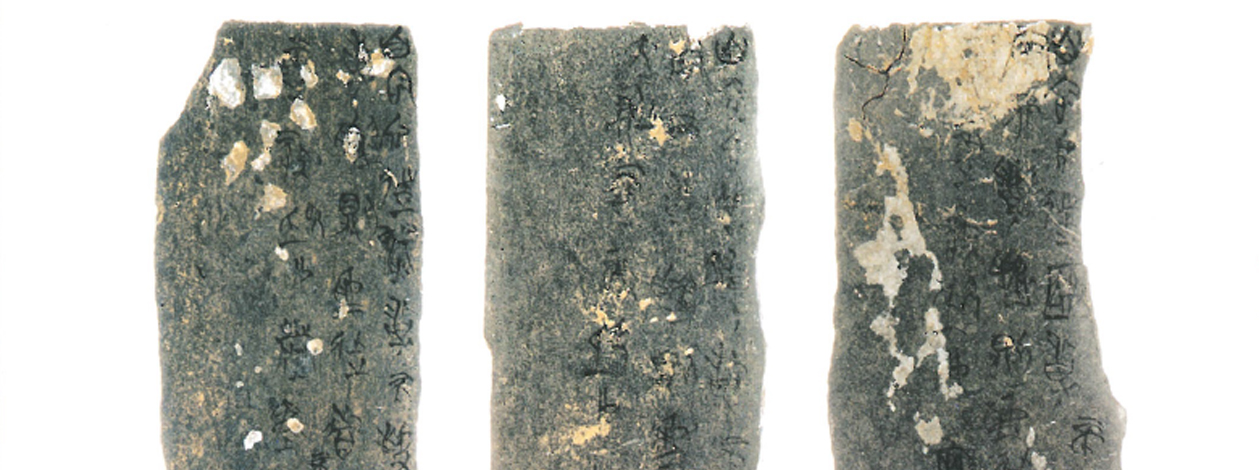The Wenxian Covenant Texts are a set of excavated early Chinese oaths of allegiance. They were written on stone tablets and date to the fifth to fourth centuries BC, the beginning of the “Warring States” era, a 250-year period during which seven major states engaged in almost constant warfare.
In 1980-81 at Wenxian, 750 km south west of Beijing, 13,000 stone tablets were excavated from the sacrificial pits in which they had been buried two and half thousand years before. On the majority of these tablets so-called “covenant” texts, brush-written ink inscriptions, are still visible. Each gives the name of an individual and that individual’s oath of allegiance, expressed in one of about ten different formulae. These oaths served as the basic tool of political organization in early China, since leaders relied on them during the constant realignments of political groupings in the Warring States period. A lineage called the Han was responsible for the Wenxian texts. As an early large state, Jin, was breaking up, smaller emerging states formed around lineage groups, one of which was the Han. But more than just kinfolk swore these loyalty oaths,as non-Han names attest. We therefore see how leaders were amassing followers whom they could put either into the battlefield or on farms to provide food and taxes to supply the armies. This period is recorded in summary fashion in early histories, but the Wenxian texts provide first-hand evidence of how the process occurred in the emerging state of Han.
This project was a collaboration between Crispin Williams, of the Department of East Asian Languages and Cultures at The University of Kansas, and The Digital Humanities Institute at The University of Sheffield, kindly funded by The University of Kansas Institute for Digital Research in the Humanities.
The Wenxian Covenant Texts were excavated by HAO Benxing and ZHAO Shigang and are housed at The Henan Provincial Institute of Cultural Relics and Archaeology, in Zhengzhou, Henan province, China. Crispin Williams is collaborating with the excavators to prepare these materials for publication. They will be published by The Cultural Relics Publishing House.
This pilot project aimed to demonstrate that the full research potential of the Wenxian Covenant Texts can be realized by providing an online database with search options enabling complex analysis of these multi-faceted materials. In particular it enabled comparative analysis of scribal features using a range of search techniques.
Project Team
- Crispin Williams (Principal Investigator – University of Kansas)
- Matthew Groves (Developer – The Digital Humanities Institute)
- Ryan Bloor (Developer – The Digital Humanities Institute)
Image used on this page: Wenwu (Cultural Relics), 2012, issue 10
